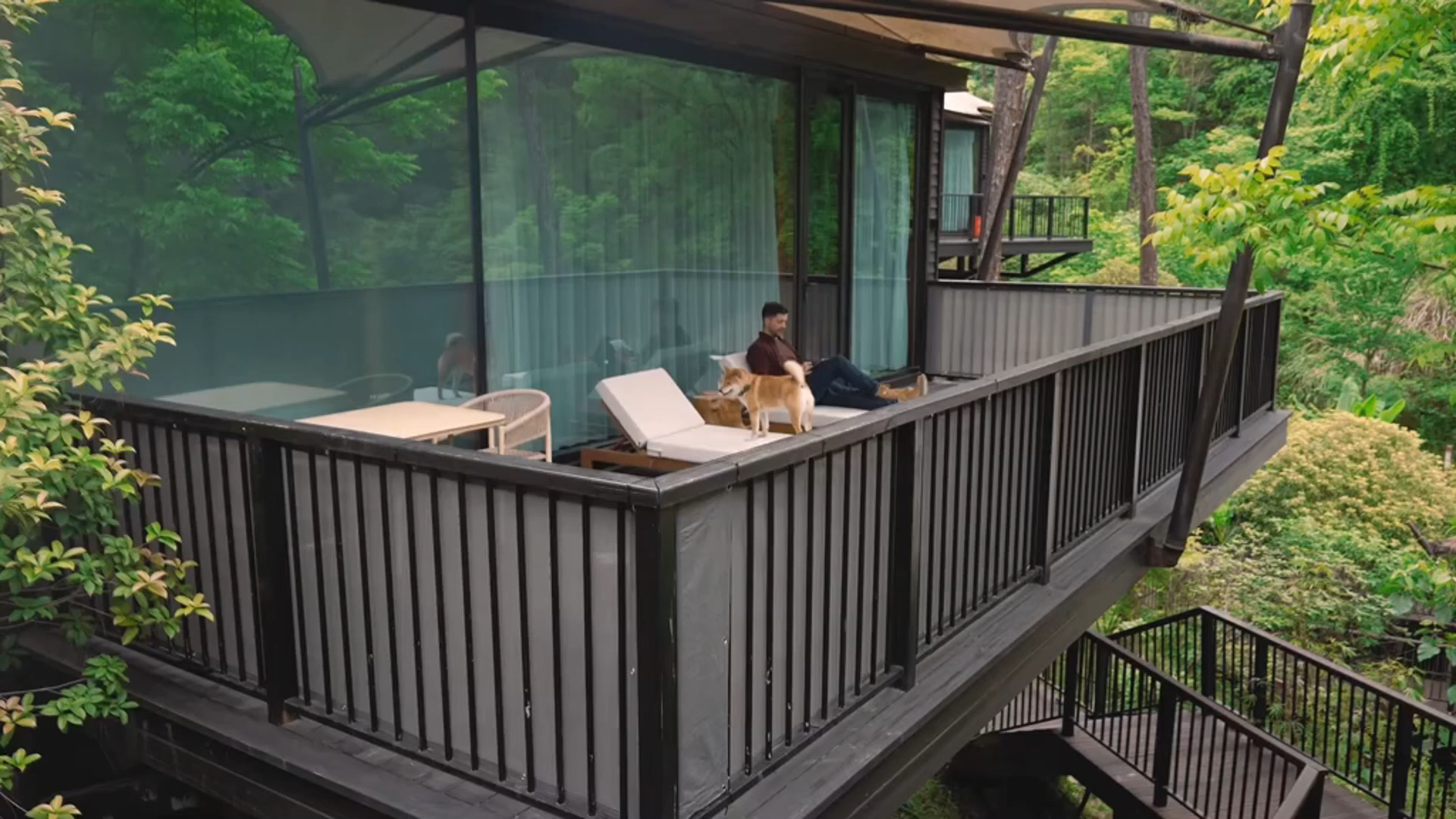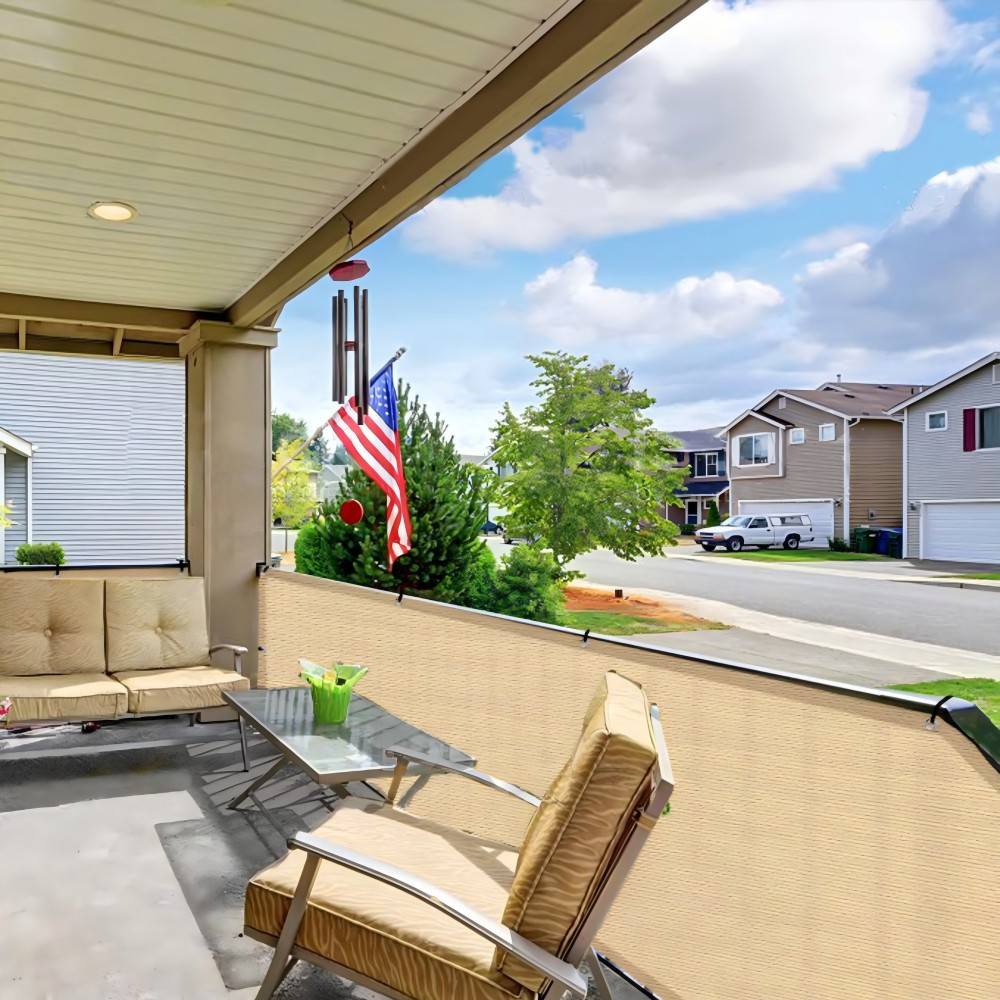On a bright summer day, many of us face a seemingly contradictory but practical question: Can we stay safe in the shade? The answer might surprise you—even in the shade, there's still a risk of sunburn. And if you’re trying to tan, that risk can increase significantly.
Therefore, don't think about sun screen after you have gotten a tan. What everyone must understand is this - embrace the shade structure, not the UV rays. This also helps immensely in avoiding sunburns.
Tanning Is the Body's Response to Damage
Dr. Elizabeth Bahar Houshmand, a board-certified dermatologist in Dallas, explains, "Tanning is the body's response to damage." When we're out in the sun, UVA rays directly stimulate melanin cells, which then release melanin to protect our skin cells. This process, which we often call "tanning," is the skin's natural way of protecting itself from UVA-induced damage.
In everyday life, 95% of the UV rays we encounter are UVA, which makes it pretty tough to avoid tanning unless you're stuck indoors all the time! This doesn't mean that our bodies are getting better at defending themselves, but it does show that there might be something wrong.
You can get Sunburn even in the shade
While UVB rays don't penetrate the skin as deeply as UVA rays, they are still very powerful and can directly cause sunburn and even skin cancer. During peak sunlight hours, UVB intensity is higher and can reflect off various surfaces, causing additional harm.
On a typical day, about half of UVB rays are blocked by clouds, and the rest are scattered by surfaces, reducing their intensity. However, on sunny summer days at places like the pool, beach, or rooftop, thin clouds are much less effective at blocking UVB rays. Smooth surfaces like glass, sand, and water can reflect 15%–30% or more of UVB rays. If you're intentionally trying to tan, your risk of sunburn increases significantly. Many people end up sunburned without understanding why, and they might question the effectiveness of sunscreen. Often, it's simply because their sun protection measures were inadequate.
Compared to people who quickly seek shade under an umbrella or tree to avoid tanning, those who aim to tan expose their skin to maximum direct sunlight, making it harder for their skin to resist indirect UVB radiation, even under the shade structure. Consequently, their risk of sunburn is much higher.
Will I Get Sunburn?
The most crucial aspect of sun protection is making sun safety a habit. Due to genetic and physical differences, everyone’s skin has varying levels of natural protection. Still, there's a general consensus on the need for sun protection, which can be effectively practiced. Ask yourself, "Will I get sunburned?" whenever you notice strong sunlight.
Can you get sunburn underwater? Yes, you can. While sunburn is unlikely in an indoor pool, the risk is significantly higher in an outdoor pool. The best approach is to use shade sails or patio umbrellas to cover the pool. Additionally, wearing swimming goggles and applying waterproof sunscreen with an SPF of at least 15 can help protect your skin from UV radiation in the water.
Can you get sunburned outdoors on a cloudy day? Yes, you might. During the summer months, the combination of high temperatures and intense sunlight can pose significant health risks. It is possible that you may choose to dress in a lighter manner in order to avoid the effects of heat and sweating. However, this may result in your continued exposure to UV radiation over extended periods. It is possible for your skin to tan or even become sunburned without you being aware of it.
Can you get sunburned at night? Generally, no. At night, the sun is at its farthest point from Earth, and the amount of reflected UVB and UVA rays is extremely low. Therefore, sunburn is not a concern at night.
Never let yourself get burned by UV rays under any circumstances. When going outdoors, check the UV index provided by weather forecasts. Wear sunglasses, a wide-brimmed hat, and protective clothing. Reapply sunscreen to exposed areas every two hours. If you feel your skin has been exposed for too long, seek a shade structure promptly. Your safety is in your hands.
How to Protect Yourself from the Ssun While in the Shade

At the very least, you shouldn’t get sunburned at home, right? Generally, garden plants and basic shade structures offer less protection compared to other options. To create a safe outdoor space in your backyard or patio, it's essential to build deep shade.
Tighten up your vision. UVA and UVB are everywhere, and the sky you see is full of UV radiation, and they radiate along with it. That's why it's a good idea to build a pergola or gazebo on your patio to provide tight coverage, rather than a cantilevered shade structure for a large space like a stadium or swimming pool. You can also use shade sails, shade cloths, roller shades, and umbrellas to supplement the shade to form a more complete shaded area. This is all about limiting the space for UV intrusion and directly reducing the amount of UV rays put into your patio.
Create the best shade possible. The most suitable shade structure often yields the best results. Choose adjustable umbrellas, retractable awnings, or custom shade sails to seamlessly integrate shading solutions into your space. This not only ensures effective sun protection but also enhances the visual appeal of your outdoor area. In this regard, public pools, amusement parks, schools, and other venues have a wider variety of outdoor shade structures that are more thoughtfully, aesthetically, and characteristically designed than some such structures in private homes. These structures are great for you to use as a reference.
Personal protection is key. The head is particularly vulnerable. Sunglasses protect your eyes, while physical sunscreens provide long-term protection for your skin and sensitive areas like your ears, nose, and throat. These are your final defenses against UV rays.
After Tanning or Sunburn
Tanning and sunburn often aren’t immediately noticeable and may become apparent only after a few hours or even the next day. Tanning itself isn’t painful but is difficult to prevent and treat. UVA rays penetrate deep into the skin, damaging each layer. This damage can cause your firm, elastic skin to become loose and wrinkled over time. In severe cases, it can harm your DNA, leading to melanoma or skin cancer.
Sunburn, on the other hand, results in symptoms like skin pain, inflammation, and, in severe cases, blistering and dehydration. Mild sunburn can be managed with the following steps:
- Take a Cool Bath:Lower the temperature of the sunburned area; applying cold compresses can also help alleviate pain.
- Apply Aloe Vera: Aloe vera contains beneficial compounds like polysaccharides and amino acids that moisturize and repair the skin. It also has anti-inflammatory, whitening, anti-wrinkle, firming, oil-controlling, acne-fighting, anti-aging, and cell-rejuvenating properties.
- Use Cucumber: Cucumber contains enzymes that boost metabolism, dilate skin capillaries, enhance blood circulation, and improve skin processes. Cucumber extract also has cosmetic benefits and helps absorb UV rays.
Mild sunburn symptoms and treatments are similar to those for minor burns from hot water. However, if you have severe sunburn, you should seek medical attention immediately. A doctor can diagnose and treat the condition and monitor the use of anti-inflammatory medications. Never self-medicate with drugs.
Sun Protection Starts with Understanding
Do you accidentally sunburn yourself?
It's quite likely. Many people desire a beautiful tan and are influenced by misleading advertising from tanning companies. Additionally, surveys show that 53% of respondents believe tanned skin looks healthier. People who seek tanning and lack sun protection awareness are at greater risk and more likely to get sunburned. Despite understanding the role of UV exposure and various regulations on tanning, thousands die from melanoma each year. Some of these cases involve individuals who deliberately tan and subsequently develop skin cancer.
Establishing the right sun protection mindset is crucial
Once again, both tanning and sunburn are forms of skin damage, and sun protection should not start only after tanning occurs. Sun protection is not just a summer task or a requirement only when exposed to direct sunlight; it should become a daily habit in our lives.
Explore Our Shade Options

Building shade structures is a common choice for summer sun protection. SunnyGuard shade sails are perfect for covering patios, pools, backyards, decks, gardens, and pergolas, offering up to 95% UV blockage. You can also select sails with specialized waterproof or breathable features.
SunnyGuard patio umbrellas are ideal for small or specific areas, providing excellent coverage. Made from high-quality, fade-resistant 200gsm polyester fabric, these umbrellas offer outstanding sun protection with UPF 50+. They are easy to operate, adjustable, and available in various sizes.
Email us to learn more about our products and enhance your sun protection experience.
Frequently Asked Questions
Can you get sunburned through windows?
Most standard window glass absorbs 97% of UVB radiation and 37% of UVA radiation. So windows are not necessarily reliable shade structures, and they don't yet have the same shade protection as outdoor shade sails and umbrellas.
Remember, don't try to sunbathe through glass, as it can still lead to skin darkening, especially in children.
Can you get sunburned through clothing?
According to scientific standards, clothing with low UV protection is almost as ineffective as being bare-skinned, so the skin covered by such clothing can still get sunburned. Look for garments with a higher UPF rating and those labeled with added UV absorbers.
Ideally, seek a shade structure within 10-20 minutes to let your skin relax and minimize sun exposure.
Can you get sunburned through car windows?
Car windshields are different from standard windows; they block almost all UVB rays and about 80% of UVA rays, so you won’t get sunburned through them. However, high temperatures and direct sunlight can still damage your vehicle. Therefore, items like car sunshades, portable canopies, and shade sails are essential for sun protection while driving.
Do shading structures block UV rays?
Yes, shading structures must be able to block UV rays. They serve as portable shaded areas and are your first and last line of defense outdoors. If needed, SunnyGuard offers shade sails with 95% UV blockage and UPF 50+ patio umbrellas. We also provide hammocks suitable for shaded areas and privacy screens for balconies. With over twenty years of experience, you can rely on our quality as a benchmark for your choices.






